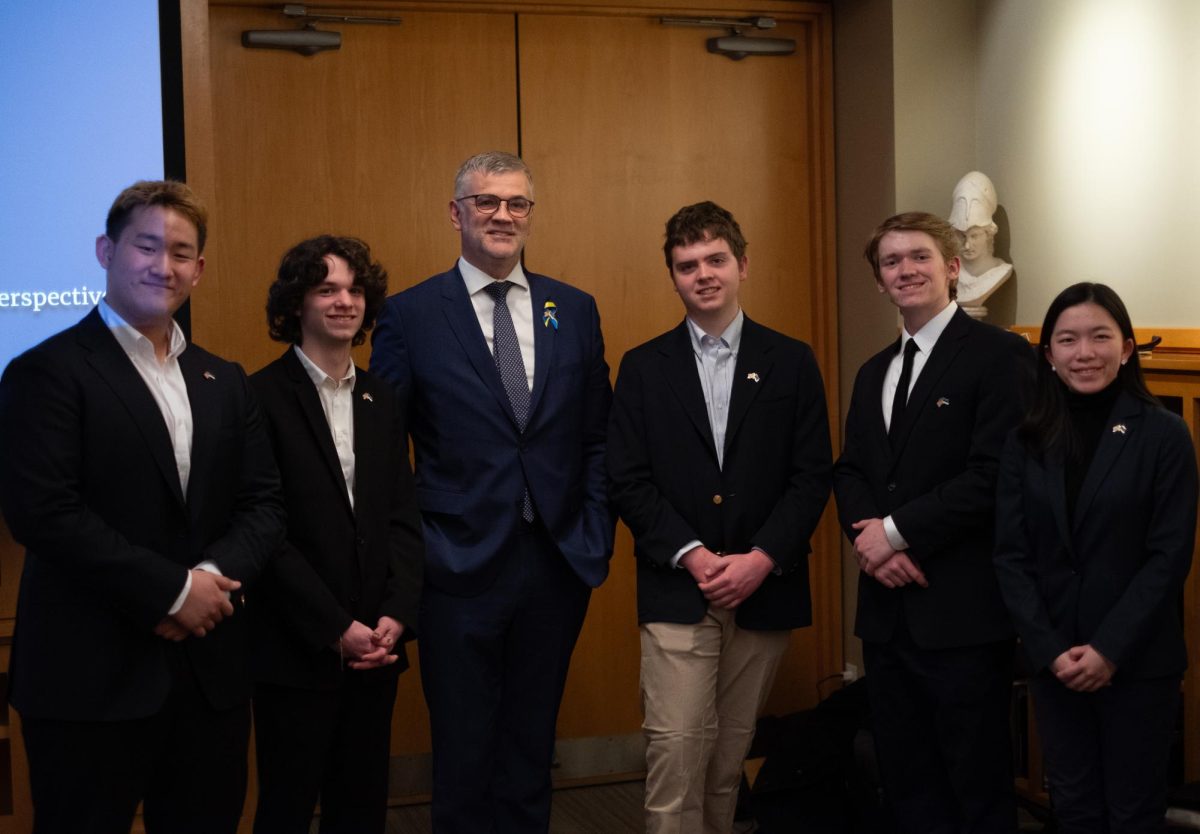As Carleton commemorated Yom HaShoah (Holocaust Remembrance Day) on May 12, I thought back to last summer, when I was an intern in the education department of the Illinois Holocaust Museum and Education Center. During my time there, I was surrounded by a community of Holocaust survivors, and from my experience at the museum, I recognized that antisemitism is alive and well. As a Jew, I am sensitive to antisemitism, and as someone who values community involvement, I feel the need to educate my community to keep it from spreading.
I have seen this troubling trend firsthand through the rhetoric that I have heard in recent months. As I became more and more politically aware growing up, I learned that the usual standard for determining whether speech is insensitive is whether that speech comes across as offensive to its recipient. Nevertheless, some of the people who have propagated this rhetoric have claimed that their rhetoric is not antisemitic because they do not intend it to be so. It is disappointing to me that this double standard exists for antisemitic rhetoric in which the speaker feels that their intent determines whether speech is antisemitic whereas with other speech, the impact of the speaker’s words determine whether those words are offensive.
In America, a major cause of antisemitism is a lack of understanding about and warped concept of Jews, which manifests through both a dearth of knowledge of Jewish history and misconceptions about Jewish people. Many Americans do not know any Jews because Jews are such a small minority and are concentrated in urban areas. Meanwhile, the media perpetuates inaccurate stereotypes so that many people who have never met a Jew have a strong but false idea of what a Jew is. In addition, because many American Jews came from Europe and as a result have light skin, there is a tendency to minimize Jews’ experiences of injustice.
As a letter from Jewish students at Columbia University pointed out, the Nazis considered Jews an inferior race. They believed in that racial hierarchy so strongly that they went to great lengths to kill millions of Jews. Following the Holocaust, the current distortion of European Jews’ whiteness to portray them as colonial oppressors is dangerous. Prior to European Jews’ assimilation in America, white privilege did not exist for them, and even though their assimilation has provided some privileges, Jews still face persecution.
Jews have faced a long history of oppression and continue to experience acute hardship. In ancient Egypt, they were slaves to the Pharaoh and suffered through a long period of backbreaking labor. When Jews lived in Persia under King Ahasuerus, Haman, one of Ahasuerus’ government officials, threatened to kill all Jews in the empire. Under Roman rule, Jews saw their Temple destroyed, and many were forced to flee, beginning the Jewish diaspora. Jews left for Europe and other places, and they faced oppression wherever they settled. In extreme cases, such as the Spanish Inquisition, Jews could face death if they did not flee the country.
The Jewish people’s predicament has persisted strongly through the 19th and 20th centuries. Jews in Eastern Europe faced pogroms, which were organized mass killings of Jews. Then, the Nazis rose to power in Germany and sought to exterminate European Jews. Nonetheless, the antisemitic idea that Jews’ “real home” is in Europe and America spreads while the world is rapidly forgetting the largest act of mass violence against Jews since the Holocaust that occurred not even a year ago.
Even while many American Jews are privileged, we still face antisemitic hate that in its most extreme forms manifests in threats of violence. Some synagogues hire security officers who monitor sanctuary doors and search visitors’ belongings to make sure that nothing that could hurt congregants makes its way into the synagogue. Synagogues and other Jewish institutions must weather bomb threats, and sometimes the rhetoric behind the threats turns into hate crimes, like the Tree of Life Synagogue shooting.
Jewish history is full of examples of violence and persecution, much of which we continue to carry with us in our prayers and storytelling. Despite this, there are actions that we can take as a community to stop the bleeding. One of the best ways to begin is by learning Jewish history. Because the Holocaust was so recent and well-documented, it is a good event to start with. For those who wish to be more able to recognize antisemitism, the International Holocaust Remembrance Alliance has a comprehensive definition that makes antisemitism easy to identify. The Illinois Holocaust Museum and Education Center has resources on their website, ilholocaustmuseum.org, and an online version of their holographic theater, in which visitors can hear testimony from survivors, is available at sfi.usc.edu/dit. Equipped with these resources, we can respond as a community to antisemitism and match our words of Holocaust remembrance with impactful action to combat hatred.









